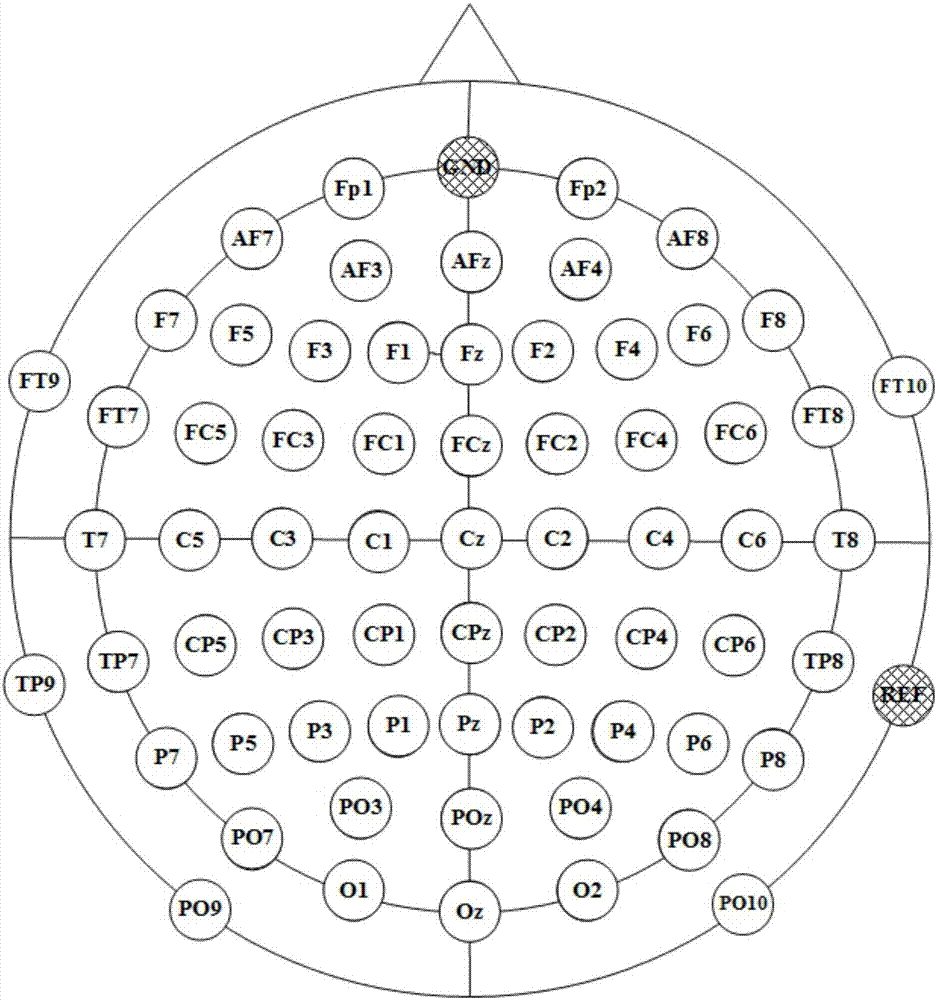Self-adaptive electroencephalogram filtering method
An adaptive filtering and EEG technology, applied in the field of brain-computer interface and medical equipment, can solve problems such as complex components and high noise signal strength
- Summary
- Abstract
- Description
- Claims
- Application Information
AI Technical Summary
Problems solved by technology
Method used
Image
Examples
Embodiment Construction
[0061] The present invention will be further described in detail below in conjunction with the accompanying drawings and specific embodiments.
[0062] like figure 1 As shown, the EEG adaptive filtering device based on common mode electrodes and MEMS motion sensor input signals of the present invention includes a signal acquisition unit 10, an analog signal processing unit 20 and an adaptive filtering unit 30, and each component module is connected in sequence.
[0063] The signal acquisition unit 10 is used to collect the user's scalp EEG signal, space electromagnetic signal and electrode movement signal, generate EEG voltage signal U1, space electromagnetic voltage signal U2 and electrode movement digital signal D3, and collect the collected EEG signal and space electromagnetic signals are initially amplified.
[0064] The analog signal processing unit 20 further amplifies the collected voltage signals U1 and U2 to the millivolt level, and performs filtering and AD conversi...
PUM
 Login to View More
Login to View More Abstract
Description
Claims
Application Information
 Login to View More
Login to View More - Generate Ideas
- Intellectual Property
- Life Sciences
- Materials
- Tech Scout
- Unparalleled Data Quality
- Higher Quality Content
- 60% Fewer Hallucinations
Browse by: Latest US Patents, China's latest patents, Technical Efficacy Thesaurus, Application Domain, Technology Topic, Popular Technical Reports.
© 2025 PatSnap. All rights reserved.Legal|Privacy policy|Modern Slavery Act Transparency Statement|Sitemap|About US| Contact US: help@patsnap.com



